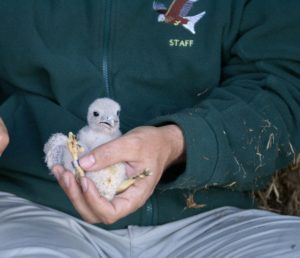When you hear talk about environmental responsibilities, biodiversity and conservation, farmers tend to receive a lot of criticism on these particularly important issues. But is it justifiable, or are farmers getting unwarranted criticism because they are the easy targets?

Understandably farmers reject the accusations that they seem to attract, that modern agricultural methods are the cause of the decline in biodiversity. The main question that seems to get thrown at them is, are they doing enough to encourage biodiversity or should they being doing more? Most farmers believe that they are doing what they can and take their environmental responsibilities quite seriously.
Most people are aware of the schemes for set-aside. The industry led Campaign for the Farmed Environment has a clear objective. To retain and exceed the environmental benefits provided by set-aside. The Campaign is supported by organisations from across the industry, a wide partnership that recognises the importance of managing the farmed environment voluntarily.
They are emphasising that by 2012 this voluntary approach needs to work, otherwise regulation will be put in place. This is of course will effectively result in more red tape, therefore expense for everyone. The Farmed Environment campaign is adamant in showing that farmers are willing and able to retain and exceed environmental benefits provided by these set-aside schemes.
So what are the benefits of set-aside?
In general it is accepted that margins of three to six metres uncropped will encourage rare arable plants to reappear.
Arable fields potentially provide the perfect habitat for some of the rarest species of plants throughout the UK. More specifically it is commonplace to find these plants near field edges, corners and gateways that have managed to evade herbicide application. This has provided the correct opportunities for the plants to be able to survive. The seeds of arable plants can lie dormant for years, so even if there are none present on your farm, this doesn’t mean they are not there.
Research has revealed that uncropped cultivated margins are one of the most beneficial methods for supporting rare plants. Finding uncommon plants in arable fields can be a good indication that rarer plants may be present. These could include dwarf spurge (Euphorbia exigua) and small toadflax (Chaenorhinum minus).
Wildlife requires a balanced approach in order to safeguard a variety of habitats. If these habitats can be connected through wildlife corridors then they become even more beneficial, by simply helping to counteract the fragmentation effect. Pollinators can be encouraged by establishing a network of flower rich habitats and amphibians and small mammals benefit from buffering and protecting water on your land.
Here at Ashe Warren farm we have wildlife margins, hedgerows, a man-made lake, and ample nest boxes. We have Barn Owls, Kites, as well as Kestrels here on the farm. These species are top of the predator chain, and from an ecological view-point, if the predators are thriving the rest of the chain must be doing well. We have ample Lapwings and Skylarks too. We work closely with the Hawk Conservancy Trust and the RSPB who visit us to carry out important surveys and to check the nest boxes. Last year we had success with Barn Owl chicks and Kestrel chicks, lets hope we have a repeat performance this year too!

Just a thought… Wildlife not just within farmlands, but within urban environments, needs a helping hand if it is to survive and hopefully thrive. The first stage is awareness, followed by a willingness to take action. How about ‘set-aside’ areas within domestic gardens? This could be achieved though ‘setting-aside’ an area to create a wildflower meadow. An even simpler method would be to allow a small area within the garden to become over grown and wild, which is left undisturbed. An area like this will attract wildlife by providing both food and shelter.